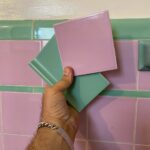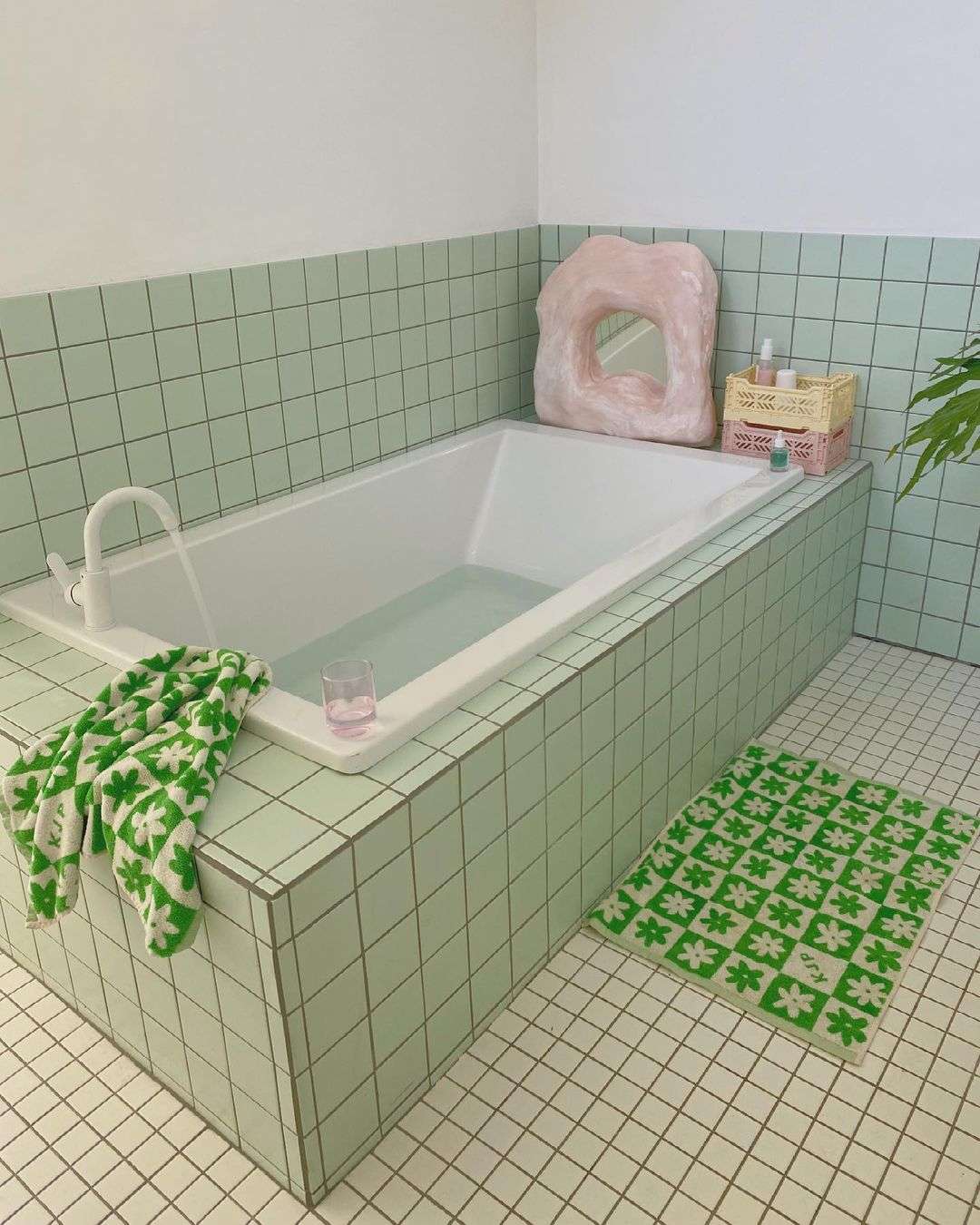Should you tile behind your bathroom vanity? That’s a question many homeowners face when remodeling their bathrooms.
The answer, like so many things in life, is it depends. There are pros and cons to tiling behind bathroom vanity.
On the plus side, tiling can add a touch of elegance and sophistication to your bathroom. It can also help protect the wall from moisture and water damage.
On the downside, tiling can be expensive and time-consuming. It can also be tricky to get right, especially if you’re not experienced in tile installation.
So should you tile behind your bathroom vanity? Read on for pros and cons of tiling behind your bathroom vanity, as well as some tips on how to make it work if you decide to go ahead with it.
Why Do You Need to Tile Behind Bathroom Vanity?
When it comes to tiling a bathroom, many people focus on the floor and walls and forget about the area behind the vanity.
However, this area is just as important as any other part of the bathroom, and if it is not properly tiled it can lead to problems down the line.
Here are some reasons why you should tile behind your bathroom vanity:
Easy Change of Decor
If you often like to change the design of your rooms, it’s much easier to do so when the area behind your vanity is tiled.
You can simply change out the vanity to something that better matches your new design, rather than having to retile the entire area. This can save you a lot of time and money in the long run.
To Protect Your Wall From Water Damage
Bathrooms are one of the most likely places in your home for water damage to occur. Whether it’s from showering, bathing, or just simply washing your hands, there’s always a potential for water to get on the walls.
And if that water isn’t properly drained away, it can seep into the drywall and cause all sorts of problems. Tiles provide a waterproof barrier that will help keep your walls protected from moisture damage.

To Prevent Mold And Mildew
Another reason to tile behind your bathroom vanity is to prevent mold and mildew from forming. Mold and mildew thrive in damp, dark environments, and the area behind your vanity is the perfect place for them to grow.
By tiling this area, you will create a barrier that will prevent mold and mildew from taking hold.
To Make Cleaning Easier
Another reason to tile behind your bathroom vanity is that it will make cleaning much easier. When there is no tile behind your vanity, water and other debris can build up over time, making it difficult to clean.
If you have ever tried to clean a textured paint job in a bathroom, you know how difficult it can be to remove soap scum, mildew, and other build-up.
Tiles make it much easier to keep your walls clean because they provide a smooth surface that can be easily wiped down.
These are just a few of the reasons why you should tile behind your bathroom vanity. As you can see, there are many benefits to doing so, and it is well worth the effort.
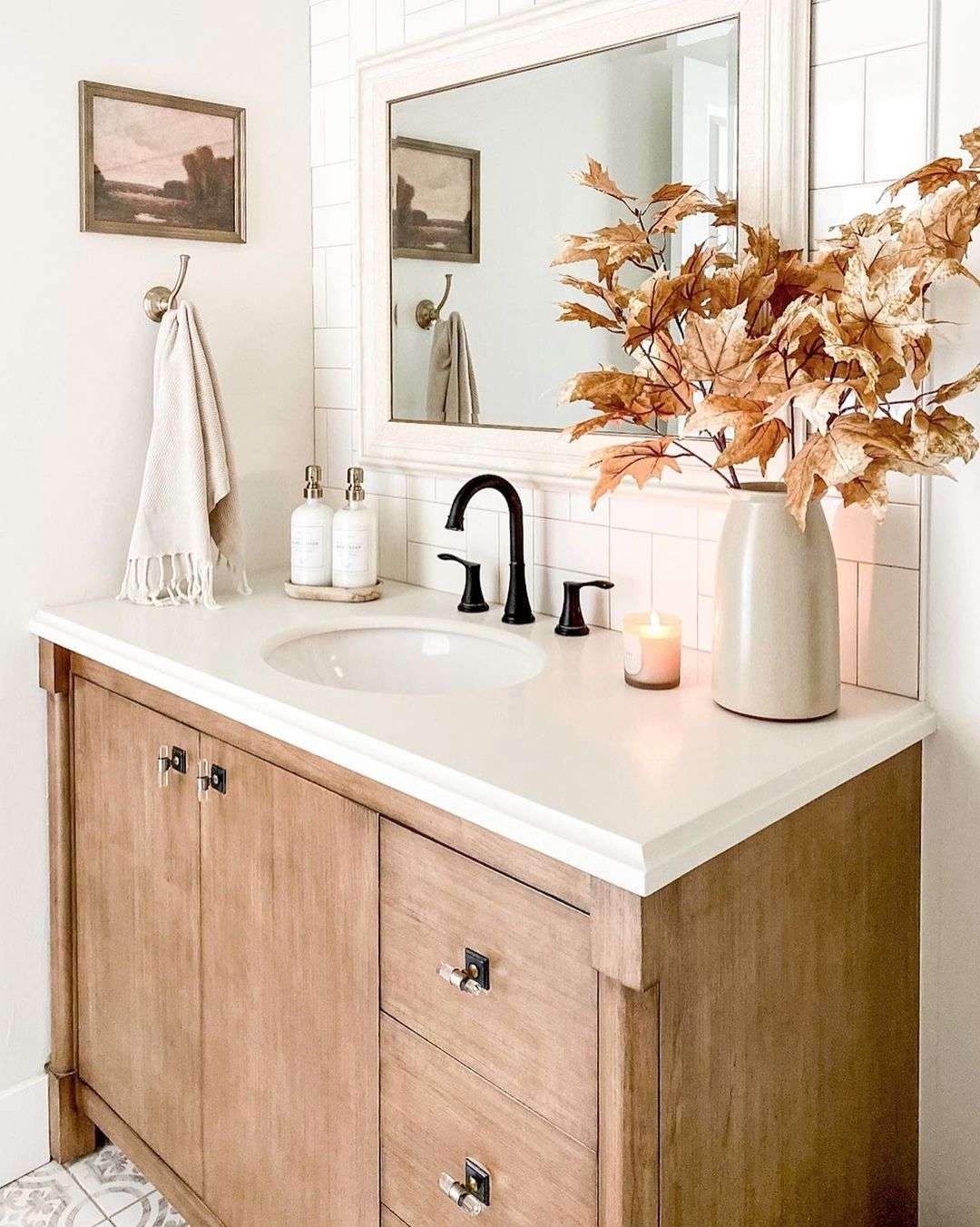
If you have not already done so, be sure to tile behind your vanity the next time you are renovating your bathroom. It will thank you in the long run!
Why Do You Need to Tile Behind Bathroom Mirror?
There are a few good reasons to tile behind a bathroom mirror. First, it can add a decorative touch to the room and help create a focal point.
Second, tiling can protect the wall from moisture and steam, making it easier to keep the area clean. Finally, tiling can provide additional support for a heavy mirror.
There are a few good reasons to tile behind vanity mirror:
Add a Decorative Touch
One of the best reasons to tile behind a bathroom mirror is for decoration. Tiling can help create a stunning focal point in the room.
Adding a decorative touch to the area behind your bathroom mirror can really help brighten up the space and make it more inviting.
Consider using a colorful tile or mosaic pattern to add some interest, or go with a simple white subway tile for a clean and classic look.

No matter what style you choose, be sure to select tiles that will be easy to clean and maintain.
Providing Additional Support
Another reason, tiling can provide additional support for a heavy mirror. If you have a large mirror that is not securely mounted, tiling behind it will help keep it in place.
Choose sturdy tiles that are securely attached to the wall to make sure your mirror stays in place.
Tiles Can Help Hide Imperfections in The Wall
If you have an old bathroom with walls that are far from perfect, tile can help cover up those imperfections.
By installing tiles behind the mirror, you can create a smooth, uninterrupted surface that will make the room look much nicer.
This can be especially helpful in a bathroom, where moisture and steam can cause damage to the wall over time. By tiling behind the mirror, you can help protect the wall and keep it looking its best.
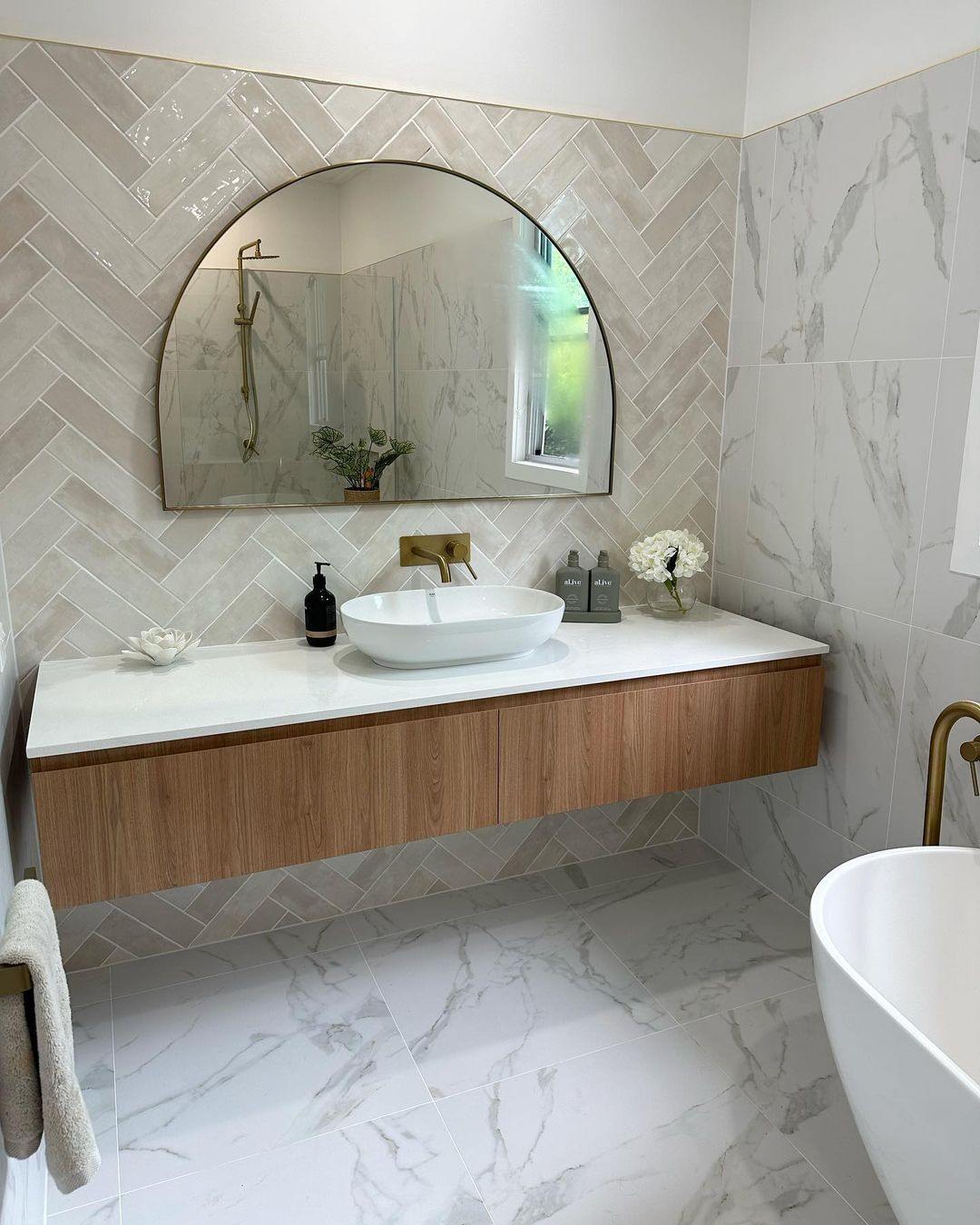
Behind a bathroom mirror is also a great place to add some extra storage. You can use small tiles to create shelves or nooks for storing toiletries, towels, or other items.
This can help keep the countertop clear and make it easier to find what you need. When choosing tiles for behind a bathroom mirror, be sure to select ones that are durable and easy to clean.
Glass or ceramic tiles are usually a good choice, as they won’t absorb moisture and are less likely to stain.
If you’re concerned about durability, you can always opt for natural stone tiles, which are even more durable.
Overall, there are many good reasons to tile behind your bathroom mirror. Tiles provide protection from moisture damage, they’re easy to clean, they can add style and visual interest, and they can even help hide imperfections.
Plus, tiles can increase the value of your home if you ever decide to sell. So if you’re looking for a way to upgrade your bathroom, tiling is definitely a great option.
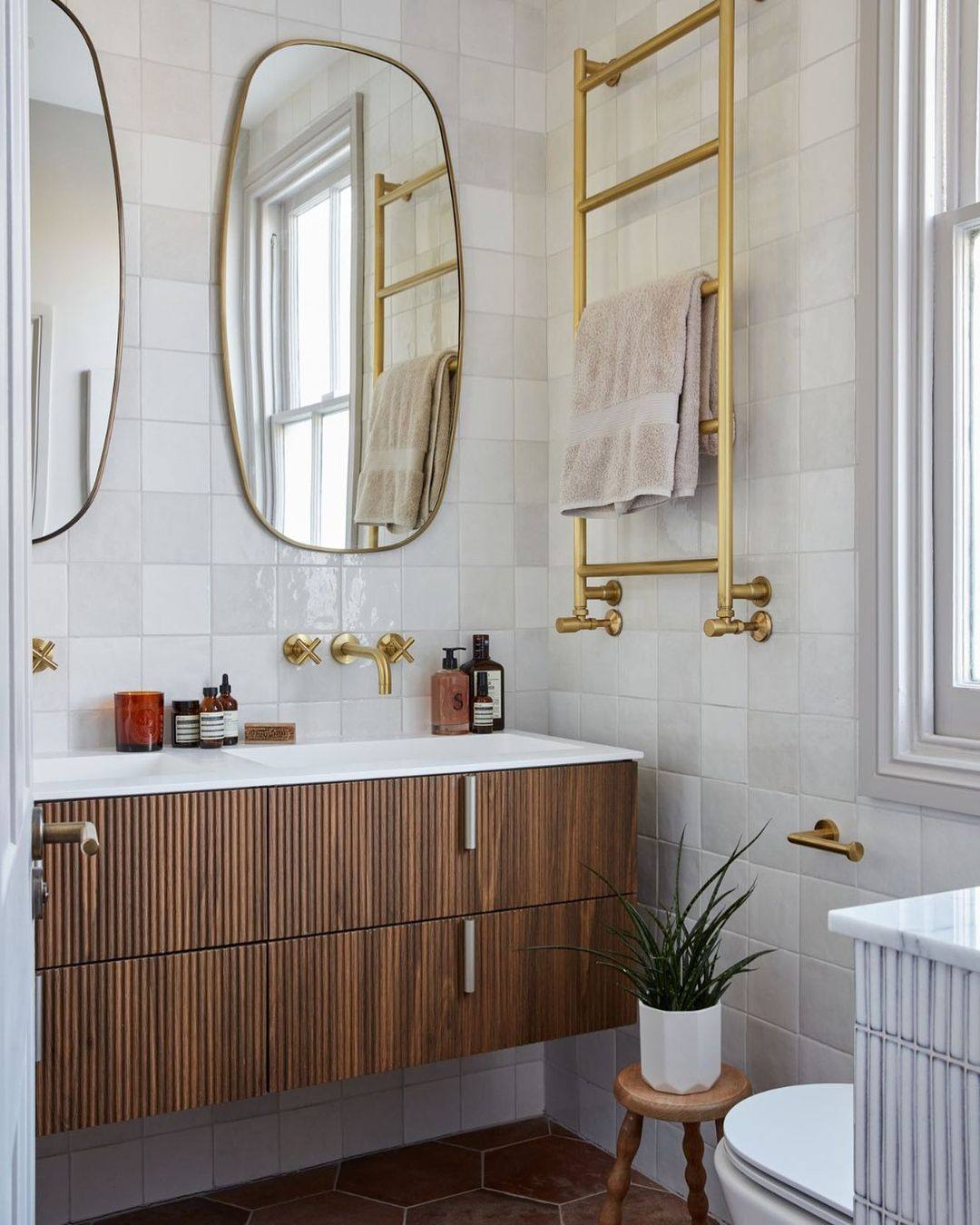
FAQ
Do you need a backsplash behind a vanity?
With most bathroom vanities, you will need a backsplash to protect your walls from water damage. Not only does a bathroom backsplash protect your walls from mold and mildew, but it also adds significant design appeal to your space.
Should you tile before or after installing your vanity unit?
This is a difficult question to answer as it really depends on the installation. If you are planning on tiling the entire bathroom, it may be easier to do so before installing the vanity unit.
This way, you can ensure that the tiles are evenly spaced and there are no gaps around the unit.
Summary
Tiling behind your bathroom vanity is an important part of keeping your bathroom looking its best. Water damage, mold and mildew, and difficulty cleaning are all potential problems that can be avoided by taking the time to tile this area.
If you are not sure how to tile wall behind vanity, there are many resources available online or at your local home improvement store.
With a little effort, you can have a beautiful, functional bathroom that you can be proud of.
Also read:
- Half Tiled vs Fully Tiled Bathroom
- How to Cover Tiles in Bathroom
- Easy to Clean Shower Tile
- How to Match Bathroom Floor and Wall Tiles
- Ideas for Bathroom Walls Instead of Tiles

Born and raised in California, Yvonne has always been interested in fashion and home decor. After getting her degree in fashion management, she started her own home decor blog, where she shares her tips and tricks for creating a stylish home on a budget.

